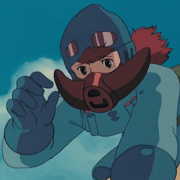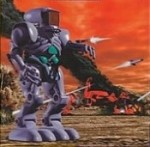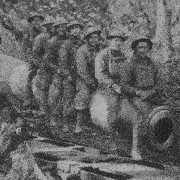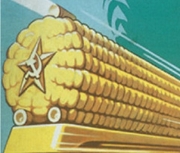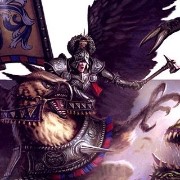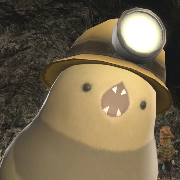|
has anyone ever seen FF and Kissinger in the same room??
|
|
|
|

|
| # ? May 24, 2024 21:43 |
|
they had to call ff back to the ranks for one last mission
|
|
|
|
ModernMajorGeneral posted:Lmao Devs misunderstood what clean
|
|
|
|
gradenko_2000 posted:https://www.timeextension.com/news/2023/11/phantasie-star-command-and-more-ssi-mindscape-games-coming-to-steam-and-gog I have wanted an updated rerelease of Age of Rifles for years and years so I am stoked - even if it's just the same game, being able to play it natively on a modern machine will be nice
|
|
|
|
Quick update: Kissinger is still dead! I've played more but I'm not posting more about my Deidre game tonight. Instead I'll put out some very specific wishes for an Alpha Centauri 2. There's no way to do these things in SMAC and I have zero hope for a good SMAC 2 so this is pointless navel-gazing. Here we go anyway! This post will be transportation and movement themed. 1. Make roads look less lovely. Especially when there are a bunch of them. Like when there's 3x3 section of road make it look like a ring road system. 2. To supplement and show off the fancy new graphics for roads, we're going to be adding a new building. It's called the transport hub, it's unlocked in the mid-game, and it has a reasonable cost for a mid-game building. It does two things; it gives you another +1/+1/+1 bonus to your city tile and it automatically builds a new road in the city radius every 2 turns or so. So once you build this, it adds roads to your city radius until the entire city is surrounded by two layers of ring roads. That Recycling Tanks style resources bonus encourages you to build it and gives a relatively small benefit but one that people will still want. 3. Mag Tube Transport Hub! Like above but for Mag Tubes. This one would be unlocked pretty soon after Mag Tubes since I don't want this building pushed to end-game. Mag Tube graphics would also be enhanced like roads and this building would let them be shown off. 4. Canals! You should be able to build canals across land to transport your naval units across oceans. Build them with terraformers, time to build a canal section increases depending on how far it is from the water. Naval units traversing a canal are very vulnerable to being attacked. Additionally, if a canal reaches one of your cities then it can build naval units even if it's not directly on the water. 5. Tunnels! Tunnels go underwater and let you transport land units underwater, like canals but under the water. Naval units can't attack Land units in tunnels but can destroy the enhancement the same way you destroy any other enhancements Fighting in a tunnel is a terrible idea because there's a 50% chance to collapse a section of the tunnel so even if you win you might lose your unit. These are all great ideas and would only enhance the game. BearsBearsBears has issued a correction as of 09:14 on Dec 1, 2023 |
|
|
|
Previously on Alpha Centauri, I had been fighting Morgan and Miriam. M&M as I'm now calling them. Miriam was largely contained but Morgan had suddenly declared war on me in a cowardly fashion. He also unveiled a dangerous new weapon, Needlejets. This dangerous and fast moving aircraft were able to strike me first and left me unable to retaliate. I could defend myself with AAA (anti-air artillery) or Mind Worms but I couldn't attack them back. The only way for me to destroy them was to attack them while they were landed at base. I needed to get my own Needlejet technology. Or did I? Academician Prokhor Zakharov, "Nonlinear Genetics" posted:Remember, genes are NOT blueprints. This means you can't, for example, insert "the genes for an elephant's trunk" into a giraffe and get a giraffe with a trunk. There -are- no genes for trunks. What you CAN do with genes is chemistry, since DNA codes for chemicals. For instance, we can in theory splice the native plants' talent for nitrogen fixation into a terran plant. Instead of going for Needlejets I went for the Locusts of Chiron. I was already pretty close, and these are more thematically appropriate for me. Locusts of Chiron are flying Mind Worms with similar advantages, and they're one of the few places that mention the name of the Planet, Chiron. Previously, I was planning on building a bunch of Mind Worms for their Offensive/Defensive flexibility but Locusts of Chiron would actually work better. They have a few advantages over Needlejets. First off, they can defend themselves against Needlejets (especially since I have the Neural Amplifier), it's maybe a 50/50 shot but that's still pretty good. They can attack Needlejets and defeat them easily, something that Needlejets normally need the Air Superiority upgrade to do, however this upgrade would also reduce their ability to attack ground units. Not only can the Locusts of Chiron attack air and ground with equal ability but they can also conquer cities, something Needlejets can't do (I think). Not to mention that my +4 planet bonus translates to a +40% bonus on the attack. Locusts share the same disadvantages as Mind Worms. They don't let you leverage your tech advantage and they can be countered by cheaper specialized troops. Those cheap specialized troops are themselves weak to normal units like my Assault Rovers. Morgan can stack cheap anti-psi units and standard defensive units to defend a city but that can be countered by artillery (although I often just use brute force instead). However, Locusts have a weakness that I wasn't expecting.  Check it out, that is an AAA unit and it's getting a +100% bonus against my Locusts. It turns out that AAA protects against all air units, even if they're using Psi Combat. I guess that makes sense? Since Psi Combat ignores attack/defense values but not the modifiers. Also, check out what the Locusts look like, they basically just look like a bunch of long dots! By the way, if you're a new player you should probably turn on the option that displays the odds before every single fight. It really helps you know which fights you'll win and why. While you're at it, turn on the option that lets the voiceovers continue even after you close the screen that triggered the voiceover. SMAC needs those voiceovers for the full experience. And turn off the option that automatically ends the turn for you, that was still considered a good idea back in the era that SMAC came out. This was the early days of 4X games so it was thought that people wouldn't realize that you need to end your turn in order to be able to do more things. With my war with Morgan and Miriam (M&M) I'm concerned about the possibility of a three-front war with Yang, who is probably the strongest AI (or maybe behind Morgan). I'm currently running Democracy+Planned for that sweet, sweet, pop-booming. However, the Democractic half of that could piss off Yang. For this and other reasons I've decided to switch to Fundamentalist+Green. The first reason is that, I've been pop-booming for a while now so all my cities that were growing have grown all they can for now, the rest need some time to terraform and build stuff. Going Green also gives me two important benefits, the first is that it gives +2 Planet which translate into +20% more bonus to my Psi-Attacks. It also gives me +2 efficiency which combined with my inherent +2 efficiency takes me to +4 (and then +5 with the Knowledge value). Efficiency does a few things, it gives you fewer drones from a large empire, you lose less energy to inefficiency, and then it does a secret third thing. So normally you have to keep your Econ/Labs balance roughly even or some of it will be wasted, more efficiency means that you lose less energy from unbalanced Econ/Lab. At a certain amount of Efficiency (+4?) you don't lose anything. So I decided to allocate (almost) all my Energy to Energy and not put anything into Labs.  Check it out, I'm still doing plenty of research at 0%. All that research is from my Engineers who each give me (+3 Econ and +2 Labs), I've got a ton of them my max size cities thanks to all that pop-booming I did earlier. Biology labs also give you a small amount of Labs. I'll be plowing all that Energy into my economy and my military and everything will be great. I also took Fundamentalism, this will help out my probing a bit and the morale of units that I build. I can't take Democratic since I don't want to piss of Yang and I can't take Police State due to the Efficiency penalty screwing up my "All Energy All the Time" Strategy. I'm not too worried about Morgan, he did take one of my cities but that's not a big deal. I can just take it back later.  Really now? Are you serious Morgan? That's just a real dick move.  Why are you building a Punishment Sphere? Just build a Hologram Theater or something. There's no need to do mass exhibitions of Nerve Stapling with the Punishment Sphere. For Gaia's sake Morgan what the hell is wrong with you?  Things are going well on the diplomatic front at least. I was planning on bribing Yang to attack Morgan but he would up doing it himself. I say let them fight it out and destroy each other.  Or not I guess. They were only at war for a five or so turns. Oh well.   I'm designing new units to take advantage of recently researching Fusion Power and I saw something weird. A (1-3) rover costs 50 minerals while a (2-3) rovers costs 50! minerals. I blame the lazy engineers not wanting to do the extra work to add the laser weapons to the design. They need a kick in the rear end. I'm probably supposed to have better armor at this point in the game. I think I steal silksteel (silksteal?) armor from Morgan shortly after this.  Meanwhile on the Miriam front, I'm just kicking her rear end. A pretty standard victory. Initial skirmishing, then a slow forward grind while I built up forces, and eventually I beat enough of Miriam's units and had enough Assault Rovers to basically roll over her. Miriam fought to the end, as she often does. I gave her every opportunity to surrender. I wonder what in her AI controls this. The AI parameters in the base game consist of about 5 numbers. I would really have preferred if she surrendered to me. Looks like Space Christianity will be forced to syncretize with space paganism. I think we'll start slow by adding pagan elements to major Christian festivals and moving them to correspond with important Pagan dates like the solstices and equinoxes.  Shortly afterwards, Yang declared war on me. Ah well, I got an extra 20-30 turns to prepare against him and generally improve my position. That's plenty. During this period I did fight against Morgan. I made decent progress but he is still a rather powerful Faction even if he is now definitively behind Yang. I had rather counted on moving my Assault Rovers from Miriam to overwhelm him without focusing too much on my military but Yang declared war on me before I could do that.  I captured back Dreamland Valley and re-renamed it to Morgan's Folly to mark his hubris in attacking me.  I captured enough territory from Morgan that I decided to offer him an honorable peace. War has started up again between him and the Hive and there's no sense in me fighting both of them when I can instead have them fight each other. I won't be surprised when Morgan tries to attack me again but a few dozen turns of peace with him would be very much in my favor. I've also switched back to Planned+Democratic to take advantage of pop-booming again. I plowed all that money into upgrading all my colonies that aren't at max pop and there's been plenty of time to do some terraforming. I'm hoping to get some more max size colonies. Sure I already have tons of energy and production but I could always use more.  Here is my invasion of Yang from the east (Western Front). A lot of these infantry are actually upgraded infantry from my very first war with the University (to the south of this screenshot). I upgraded them with clean reactors and then sort of forgot about them until I had the spare cash from running 90% Econ. Now they'll be leading the attack against Yang, supported a great number of Locusts of Chiron.  Here is where I'll be invading Yang from the North (Northern front). You'll notice that I made sure I had a land route into Yang's territory while still letting Morgan have plenty of border with Yang. I'll be mostly using Assault Rovers from this end, also backed up with the Locusts.  Yang's heartland, with recent maps taken straight from his databanks. A great number of cities but only a few are well developed. Since we last looked upon his heartland he's added a significant number of sea colonies. I'm going to need to build a naval force in order to take those as well, backed up by locusts as usual of course. One thing I immediately notice is that two of his most developed cities are right next to my territory and should be easy to take. Easy is relative though, since Yang gets Perimeter Defense on every single one of his cities he is well suited to a defensive strategy. I can grind him down and probably do it pretty efficiently but it's going to take a while. Another thing to notice is that Santiago is to the north of Yang and is connected to his territory by a tiny land bridge. She's pretty weak but has moved to fourth place once Miriam was taken out. She's not a great ally but maybe I could cultivate her a bit? If I got a pact with both Santiago and Lal then I would have a majority in the council since Zakharov surrendered to me. Something to consider on the diplomatic front. Lal has a single city left. I could give him back the cities that Miriam stole from him but I'm not going to. Next update will hopefully feature my victory. If I can't get a diplomatic victory then I will get a technological one. Even with all these wars I'm still investing plenty into my economy, way more than I invest in my military. I'm just starting on building my first satellites. BearsBearsBears has issued a correction as of 11:50 on Dec 2, 2023 |
|
|
|
GMT hired some Political game designers for the imaginatively titled "Miracle on the Dnieper". It's extremely NAFO brained and even the loving blog post is written incoherently, so without further ado: 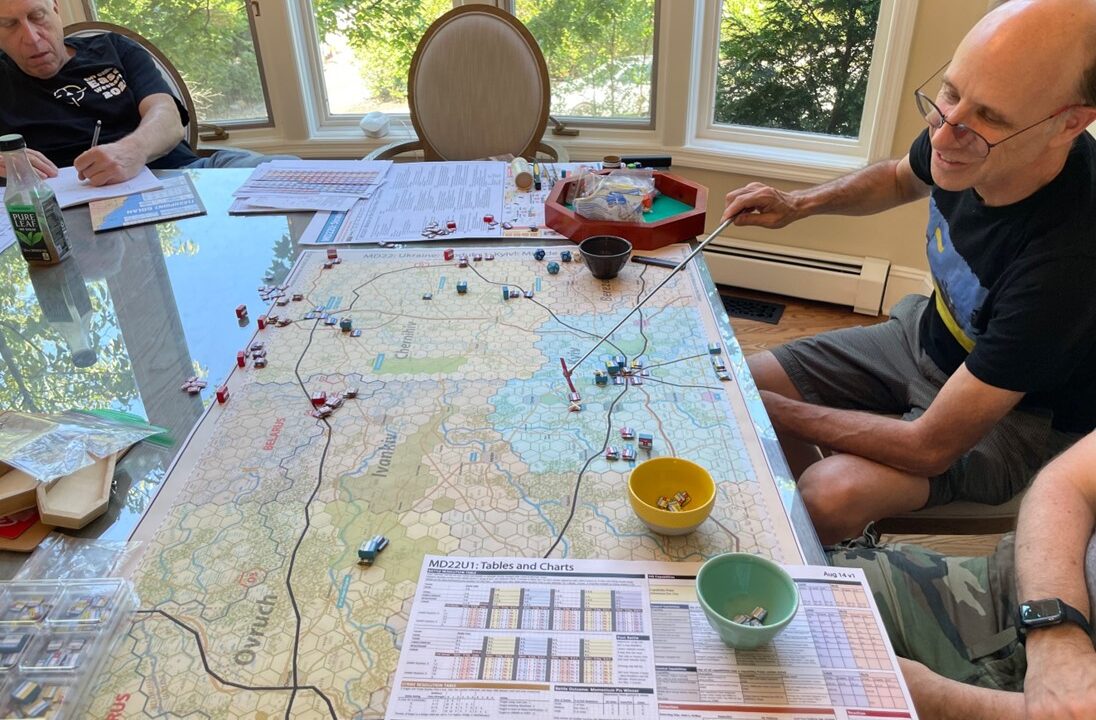 First Draft of History: Designing a Military Simulation of the Russo-Ukraine War 2022-2023 What follows is an article from D B Dockter and Mark Herman on the design of their Ukraine 2022! game (an August 2022 playtest is seen above), expected to be available for preorder this summer. Background: Russia invaded Ukraine on February 24, 2022, attempting to conquer a near abroad European republic in an effort to recreate a Russian empire. This was the same European republic, Ukraine, that had successfully freed itself yet again by overthrowing a Russia-backed leader during the 2014 Maidan Revolution. For many of us children of the 20th century, it appeared like some fascist fever dream attempt to “Make the USSR Great Again”: a cold war finally going hot. A big European war in 2022? Seriously? Would Putin actually invade Ukraine again and attempt to erase a nation state of 41 million Europeans? 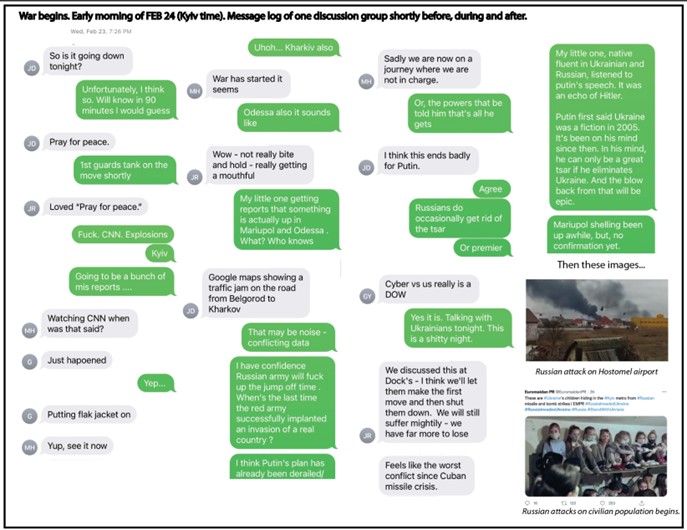 Many of us have followed (or participated in) the story arc since the fall of the Soviet Union, Ukraine’s evolution into a Western republic and the rise of Putin (see Putin’s Way: Frontline: PBS). And some of us have followed the 2021 Russian build-up of 100+ BTGs (Battalion Tactical Groups) plus other existing formations on the Ukrainian border. And, a few of us read Putin’s infamous July 2021 7,000 word essay “On the Historical Unity Between Russians and Ukrainians”. So, we had eyes on it. The war has its roots in Russian Eurasianism, described by Marlene Laruelle, with one of its philosophical architects as Aleksandr Dugin. Russian Eurasianism is a call for an illiberal totalitarian Russian Empire to control the Eurasian continent—from Dublin to Vladivostok—to challenge America and Atlanticism. Russia’s war of “ethnic and cultural cleansing” of Ukraine represents just one continuing step in implementing that vision. More to follow in the Russian near abroad (see Baltic republics) if successful. Stay tuned. Opposing that? An independent European republic, Ukraine, that precedes the founding of Russia by a few hundred years; a country that desires to become a part of Europe and not a satellite in some resurrected USSR led by a dictator. That’s the ideological context: a totalitarian expanding empire (think “House Harkonnen” for us Dune fans) vs. an independent European republic. It gets better. So, the totalitarian regime tries to bum’s rush the republic, believing their own propaganda that the invader will be “Greeted as Liberators”. They pack a marching band for the scheduled glorious victory parade. The plan was to seize the republic’s capital, Kyiv, in 3 days, by utilizing a tried and true Red Army playbook (Prague 1968/Kabul 1979). Then, eliminate Ukraine’s leadership, suppress (“cleanse”) the resistance, topple the republic, and conduct a triumph worthy of Caesar to celebrate Russia’s great, new tsar. But the republic not only thwarts the plan, but, within six weeks, routs a vastly superior army (arguably top three in the world prior to war) out of the theater. How did this “Miracle on the Dnipro” occur? A compelling story of resistance. And, as with any compelling story, fertile material to tell a tale. A book? A movie? An HBO series? How about a military simulation (“wargame”) of the heroic struggle of Ukraine? The last one (designing a wargame of an ongoing conflict) is the fool’s errand two of us embarked on in the summer of 2022: a first draft of history while the bombs were falling…a view of the military conflict unfolding as it was. We began designing a wargame on the conflict within the first 100 days of Russia’s invasion. So, there was plenty of fog of war surrounding what actually occurred, plenty of ground to produce a simulation that events would subsequently and possibly make irrelevant, and plenty of fertile material for the sound and fury of social media to rage against. Wiser men and women would avoid. But not us fools. Historical military simulations (“wargames”) seek to provide students of them with a sandbox to better understand what happened and why. Or, “What could have happened if different choices had been made?”: you be the judge. Designers of such simulations benefit from perspective (distance from the conflict) and being able to understand what actually happened using data/facts/stories, assuming that conflict is firmly buried in the past. Additionally, some of the immediate rawness of the conflict has passed/healed with time, so dispassionate perspective can be gained. Modeling a hypothetical simulation gets a free emotional pass: the designer invents a story and the audience has little emotional attachment to the conflict. Modeling a conflict currently underway—headlines screaming with a daily litany of war crimes (such as Bucha)—blood on the streets…well, a designer tackling that subject gets no free pass. Tread carefully. In 2010, GMT and designer Volko Ruhnke published Labyrinth: The War on Terror while the conflicts in both Iraq and Afghanistan were still occurring. Predictably, sound and fury ensued prior to publication, during publication, and post-publication. Many of the usual hobby horses were trotted out: “How can you do a game on a current war?”, “It’s not an accurate depiction of the nature of the conflict!”, “The game has a political viewpoint!” Yada,yada,yada. Labyrinth won the Charles S. Roberts Best Post-WW2 Era Board Wargame in 2010. The game is the 53rd top-ranked wargame ever published [per BoardGameGeek], and just produced a recent expansion. So, Mr. Ruhnke proved, along with other designers, that one could cover an ongoing conflict well. Challenges? Yeah…a few… Some challenges with modeling an ongoing major European war in the first part of the 21st century: 1) PREMATURE LESSONS: Lessons drawn reflect what has been learned up to that point, which may prove to be actually the wrong inferences drawn from the conflict six months/six years/six decades from now. 2) FOG: Data/facts are incomplete; that fog of war thing thickens as proximity to conflict increases. 3) CHANGE: War has apparently changed, again!…There’s enhanced and expanded multi-domain war. For example, one in which images/pictures/field intelligence is uploaded to Twitter, crowdsourcing geeks pour over it/analyze it/amplify it, and it impacts the actual operational campaign and related information war – which in turn impacts the strategic will of the competing sides (for example, see #OSINTGuild224)…There’s a 24-7 integrated NATO/Ukraine intel net…And, the age of drones has arrived. Plus, there are changing economics. For example, consider one $78K Javelin missile (or a sub $1k drone!) destroying a $3M T-80 tank. That math won’t hunt. 4) PROXIMITY: The Russo-Ukrainian War is playing out every day and will likely continue until a dramatic, possibly horrific, conclusion occurs. This war ends in the bunker (mad tsar deposed) or battlefield (Russian army mutinies yet again). Negotiating with a fascist dictator on the march has historically proven to be a poor choice (see Munich 1938). So, it’s in our face reminding us of the horrors of WW2 and what could have happened not long ago (a cold war going hot…that The Day After thing). 5) MODEL: What is a decent strategic operational model of this particular conflict? Who has that? What existing models can be tweaked? Is there anything we can beg, borrow or steal? One of has us has four decades of experience in this space (modeling modern conflict), while the other had extensive contacts/experience with both Ukraine and Russia to help us manage the design challenges. Gulf War In 1983, Victory Games published the military simulations Gulf Strike and NATO: The Next War in Europe, following upon the success of SPI’s 1978 big game, The Next War. Gulf Strike was designed to be a triphibious simulation to examine hypothetical conflict in the Persian Gulf. Seven years after its publication, one of its secondary scenarios became a reality and the game for a short time was news. Herman’s favorite experience during the Desert Shield portion of the buildup was when he was on all the news networks, including a live interview on Fox. During one of the interviews the first question asked was “Why was I [Herman] trying to make money off the blood of dead Americans?” (and this from a Canadian news crew). Herman then mentioned that the game came out seven years earlier. The interviewer stopped the cameraman, looked at his notes and then said, “drat! Now I have to turn you from a scumbag into a seer.” Without missing another beat the interview restarted and the first question was, “How did you have the foresight to do Gulf Strike?” Remember, if it bleeds, it leads. In Herman’s subsequent book and numerous interviews, he indicated a classified version of Gulf Strike was used the day of the Iraqi invasion to map out potential US policy reactions. At D+1 the report was delivered to the Office of the Secretary of Defense. The story that is not well known is a week before Desert Storm (the offensive), the US Army used the game to look at their war plan and the result was an Iraqi collapse within 96 hours. So, the more interesting story is Gulf Strike was considered a valid combat simulation by the DoD. One of the important features of Gulf Strike was its Theater and Operational level. When Herman subsequently did Flashpoint: Golan, he wanted to reflect the tremendous improvements in sensor to shooter architectures and how they would impact late twentieth century conflict. On February 24th Russia invaded Ukraine, and we began to consider updating the Flashpoint system to examine early twenty-first century warfare. A mid-June 2022 email and call: On June 13th, Herman received an email from a publisher wondering if he would be interested in doing a game on the war. The publisher was looking for something “simple/entry level”. That would not be us. While we have collaborated on each other’s games, we’ve wanted to co-design a game for a bit. A quick phone call was placed by Herman to determine interest. Dockter had two issues with attempting the project: 1) “I’m too close to the conflict: second generation Ukrainian, friends/family in the fight, and I’m busy trying to assist the rebel alliance in a number of ways. So, pass.” 2) “And, I’m not happy with how modern conflict has been modeled at a strategic operational scale. The last decent design I’ve played is four decades old: The Third World War series by GDW. So, Mr. Herman, What model could we use for this war? Related, I have ZERO interest in developing something from scratch. So, hard pass”. Herman’s response? “Dr: This story needs telling- you can help tell it – and I’ve got a model that we can adapt. Promise. I’ve been designing modern strategic operational wargames for four decades. What I have in mind should work. And we’ve got a bench of highly interested play-testers, developers and helpers for this game”. And with that, off we went…roughing out a game… 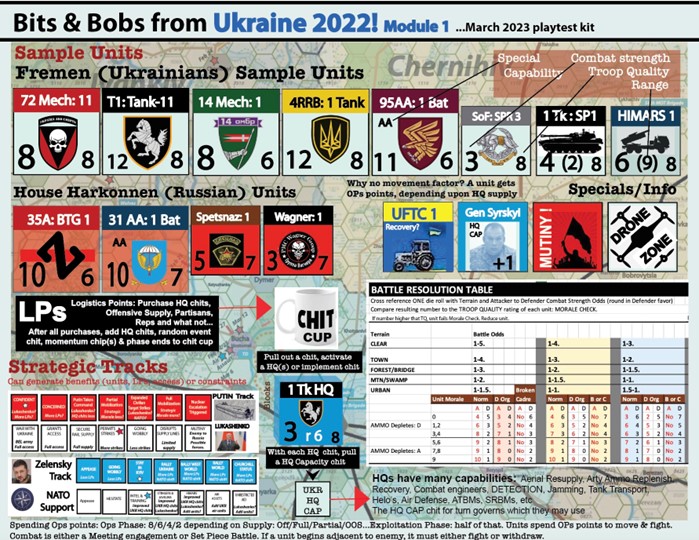 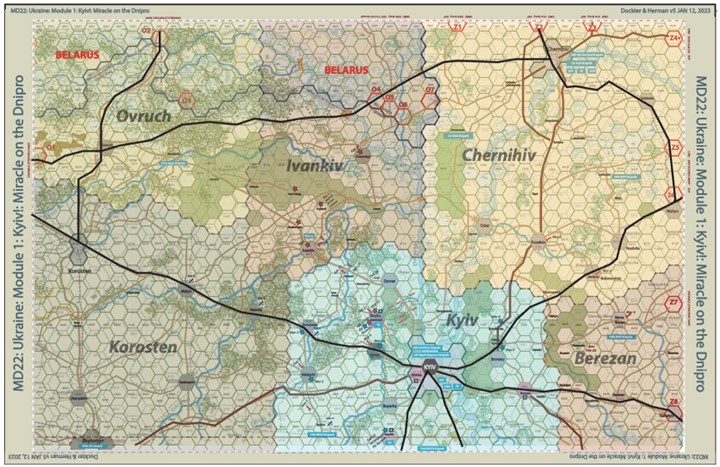 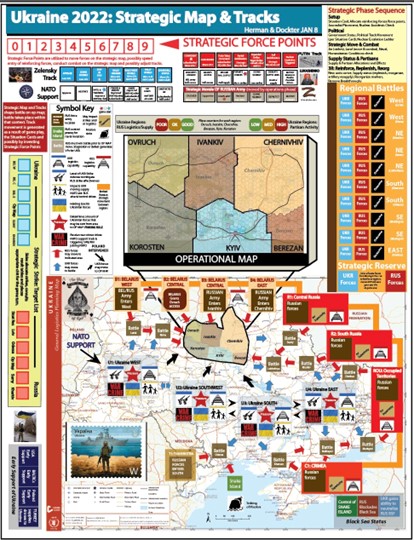 Back to the Future: What are the major drivers/dynamics of the Russo-Ukraine war? First, what was Putin’s war plan? There’s a good depiction here by one of the whip-Valery smart Twitter war analysis geeks, @JominiW: 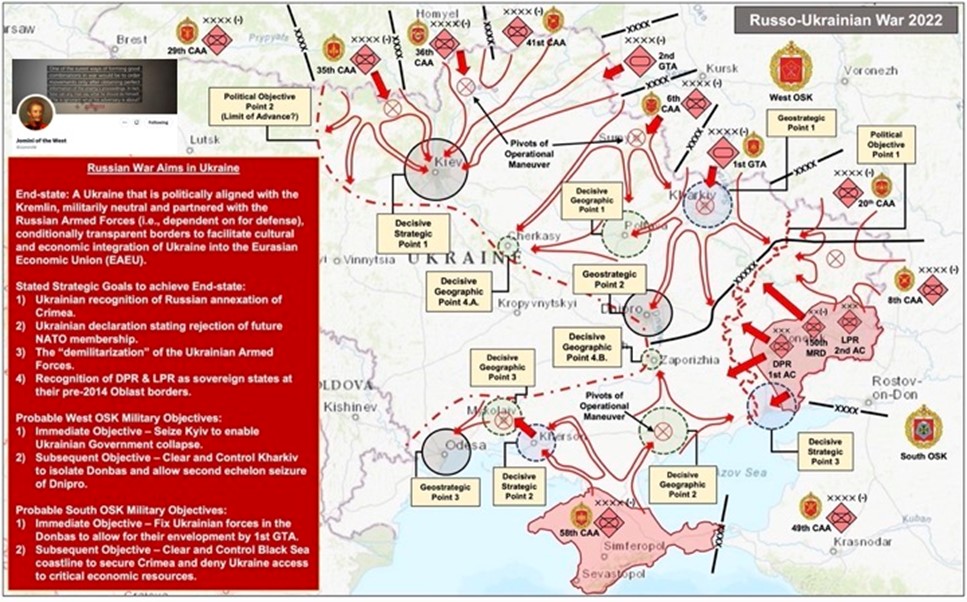 So how did it turn out; at least the initial phase? For that, we turned to Putin’s military strategist: General Valery Gerasimov (of “little green men”/hybrid war fame). His construct of modern conflict was published in 2013. On March 5, 2022, we sent a tweet regarding our assessment of Gerasimov’s implementation of his vision at that point: an epic failure. 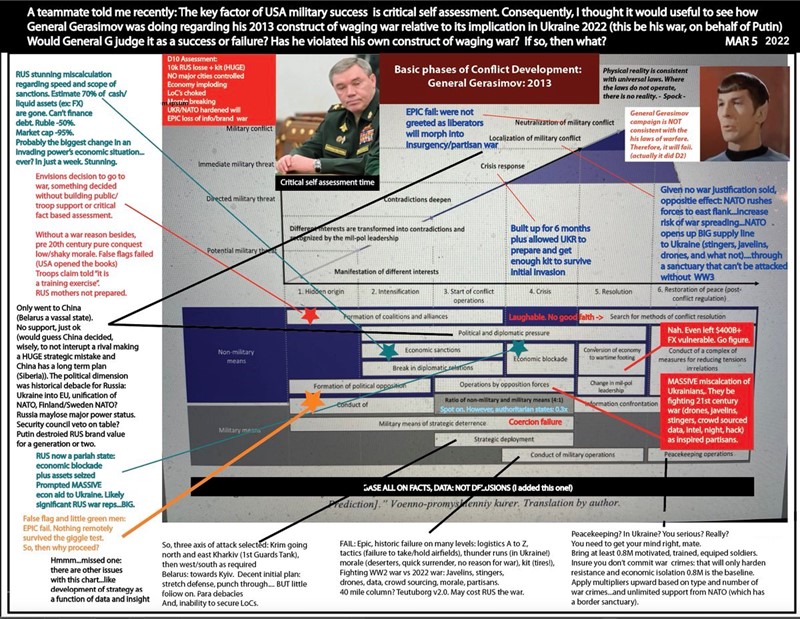 There is some rich irony here. Russian army doctrine reflects RED WW2 doctrine, which does not remotely match how war is being conducted in this or the previous decade – or even General Gerasimov’s view of hybrid war. Dynamics of the Conflict Given how the war has turned out so far, what can we infer about why it played out the way it did? A few dynamics that we will reflect in our strategic operational model include: Impacting both conflict participants: Politics. We both love historical conflict simulations that bound military operations within political constraints. And, that political constraints respond to player choice and game developments. So, we’re building a number of political tracks that will provide/restrict operational capabilities. Variable setup. We’re likely to get much wrong; such is the price of a first draft of history. Our planned answer? We’ll put a stake in the ground: our best guess jump off point: this is not a what if game, but rather a first draft of history. Players will choose which formations to activate and utilize in the critical first few turns through expenditure of Logistics Points (“the currency”…purchase of HQ chits, mustering, reinforcements, strikes, etc.). Base Logistics Points for each scenario will be adjusted by various political tracks in the strategic module. A planned future expansion will include a baseline starting scenario with four alternatives. A more Putin friendly/Putin appeasing White House/NATO? Lukashenko and the Belarusian military fully cooperate? Scenario RED. Earlier NATO aid to Ukraine and better prep by Ukrainian forces? Scenario BLUE. Two other scenarios tone down the extremes of each to complement our best-guess base case scenario. Impacting Russia: Boom. Basically, mid-20th century Red Army doctrine. MASSIVE artillery prep prior to taking ground. Go Grozny or don’t go at all. We think we’ve reflected the relative strength of Russian artillery forces in a number of ways. A shortage of infantry. It appears due to Sergei Shoigu/Gerasimov BTG lark, operational security and a desire to limit the political blowback from mobilization, Russia went “on the cheap” regarding infantry, failing to adequately staff up its BTGs with enough foot soldiers. Consequently, Russian formations are generally more brittle than Ukrainian units. Combined arms? Huh? Lack of coordinated air/land operations. Lack of ability of Russia to establish air supremacy or even local air superiority will impact Russian offensive punch in our game. An outstanding recent article from CAN, “Russian Combat Air Strengths and Limitations: Lessons from Ukraine” by Justin Bronk dives into the air war aspect of the conflict. Obsolete kit…to the point of putting “Javelin cope cages” on their constantly-exploding armored vehicles. Infighting. A lethal mix of contract, conscripts and mercenaries. Inter-service and intra-service rivalry. The New York Times reported (on March 31, 2022) that Russia lacked a central command for the operation for the first 45 days. Formations from four military districts, plus mercenaries, plus Russian national guard, paratroopers and special forces. None of which integrate well with each other. Miserable logistics. There’s a fantastic article regarding this at War on the Rocks, Feeding the Bear: A Closer Look at Russian Army Logistics and the Fait Accompli by Alex Vershinin (published November 23, 2021). Essentially, Russian logistics are confined to about 50 miles or less from a railhead. As the war played out, there were a number of analysts, Trent Telenko (“the tire guy”) in particular, that focused on particular Russian logistical limitations. We’ve reflected this by placing fairly restrictive supply considerations on the Russian army. Poor morale & lack of leadership. Significant leadership losses (and purges). No NCOs. Inability to react/adapt locally. Inability to conduct critical self-assessment. Fifth column: A raid to kill Ukrainian president Volodymyr Zelenskyy failed miserably, apparently with a tipoff from Russian intel services. However, Kherson is a great example of a treachery card that worked; the city was poorly-defended, and the key to its gates was provided to invading forces. Same with Nova Kakhovka. Ethnic/cultural cleansing. Russia planned, permitted and committed significant war crimes to increase morale of Russian population and its troops. Of course, this quickly hardened Ukrainian and NATO strategic will also. Impacting Ukraine: HIGH morale. Putin’s invasion managed to do to something previously thought impossible: unify Ukraine after hundreds of years of disunity. We’ve reflected this (and the item below) by giving Ukrainian units generally higher technical troop quality. NATO-trained. Since Ukraine’s successful overthrow in 2014 (the Maidan Revolution) of Russia’s puppet leader, NATO has been training Ukraine’s built-from-scratch army. However, the Ukrainian army still exhibits “Soviet mentality/doctrine” throughout a number of formations, so it’s a mixed bag. Smart/flex defense. There was an abundance of Stingers, Javelins (or similar) and intel (crowd-sourced plus integration with NATO). And drones: Ukraine has dramatically and innovatively accelerated the impact of drones on the field of combat. We’ve reflected this with Ukraine’s HQ capabilities. Minimal deep strike initially. At first, Ukraine lacked artillery and weapon systems to attack deep. Early in the war, we witnessed The Farce of the Mysterious Polish MIGs. And there was a reluctance of NATO to risk widening the conflict. NATO had to go up the escalation ladder from non-lethal aid, to purely defensive, to limited heavier weapons to heavy weapons (such as HIMARS). NATO is still reluctant to provide deep strike weapons or modern air defenses (such as Iron Dome). Minutemen/Joan of Arc citizen army. Ukraine has stood up a citizen army (with a significant component of women on the front line) around a professional core while being invaded by a neighbor three times their population size. Citizens/partisans helped save Kyiv. We’ve reflected this with a “wolves mechanic”: Ukrainian units pop up as the Russians push towards Kyiv. Ability to conduct offensive operations with punch and flair. Ukraine had demonstrated some ability to push back hard during the 2014 invasion in Donbas: in particular, Zabrodskyi’s raid. We saw signs of that during the first six weeks of the campaign, 1st Tank Brigade in particular. In early September, Ukraine unleashed “Operation Kupcake” (Kupiansk, etc) and rapidly captured territory southeast of Kharkiv. So, Ukrainians can do Sherman & Stonewall strikes. Impacting NATO: Unified. USA-led, with STRONG backing from the UK, the Baltic republics, and Poland in particular. In fact, the mad tsar had done something impossible post the previous USA presidential administration: not only did Putin’s invasion unify NATO, but it precipitated NATO expansion (Finland, Sweden and eventually Ukraine). Prep. There was some warning and some preparation provided to Ukraine. NATO had been training the Ukrainian army since 2014 and ramped up assistance under President Biden in the fall of 2021 and just prior to start of the war. The information war conducted by Biden (ex: disclosing of intelligence), NATO and Ukraine (outstanding social media campaigns) caught Russia off guard and set the stage for Russia’s lopsided defeat in the information war. Imagine what a Putin-friendly White House would have cost Ukraine on the run up to war. You’ll be able to game that particular scenario. Eyes wide open. The West had to get past appeasement policies favored by some and European energy/economic integration with Russia. Most difficult, a disbelief of Putin’s Eurasian empire plans had to be overcome. And, many Western republics were/are battling their own fascist/fascist-sympathetic minority parties. Aid ladder. NATO began with providing almost non-lethal aid, then purely defensive light systems. They had to work up an “aid ladder/track” to supply heavy/deeper strike weapons and defenses. Russian war crimes significantly increased strategic will of NATO to march up that ladder. Limited response. On Day One, NATO/USA indicated no troop involvement and a desire to NOT supply Ukraine with weapons that could actually hit Russia. So, that was a clear constraint on Ukraine’s ability to respond to the aggression. Let’s stop there; it’s already a long list. So, as with all things, one would need to break this into bits—to “bucketize.” There is a need to distill. Less is more, as is often the case with the bone-crushing/soul-destroying experience of trying to simulate conflict dynamics into an elegant and engaging design that produces a compelling narrative. How the Sausage Gets Made… So, how are we attempting to tackle the challenge of producing a wargame on a current conflict? First, research, research and more research. One of us stood up a twitter handle & feed seconds after the war began and scraped OSINT data on the web regarding the conflict. And amplified it. Besides the incredible social media campaign being conducted by Ukraine to galvanize support (“strategic messaging”) and attack Russian strategic will, it is clear junkyard analysts are crowdsourcing intel for the resistance. Those junkyard analysts have provided some outstanding insight. A sampling below: 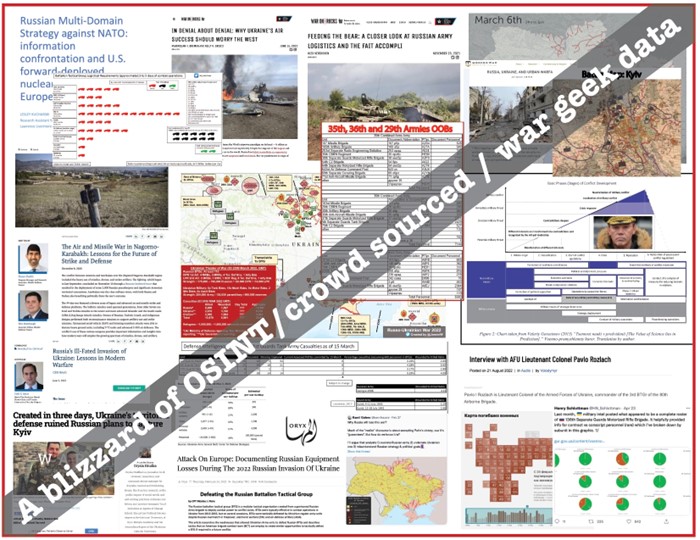 The open-sourced metrics, firsthand accounts and analysis regarding the war spew like a fire hose every day. We supplemented that with on-the-ground reports from our Ukrainian/Russian contacts as it happened. Same was the case regarding the buildup prior to the war, beginning in the fall of 2021. Cataloging, distilling and capitalizing upon insights gleaned from the data is required to produce a strategic operational simulation of what did happen and what could have happened (that which survives the infamous giggle test). Basic Simulation Model Using a strategic and operational map model will allow us to embed the various operational offensives within a theater context, as Herman did with Gulf Strike. The idea is to cover each of the offensives not as ‘what if’ excursions, but as the first draft of history within a year of their occurrence. This way we can use the best information available to try and gain an understanding on how and why things resolved themselves. As of the writing of this article, we think we have a relatively accurate, but not precise, understanding of the failed Russian attack on Kyiv (less so with Chernihiv). We have pretty decent research on the failed campaign to take Odessa and the liberation of Kherson. We are developing an understanding of the battles in the East and #OperationKupcake. So given that, what have we learned since the 1990s? Flashpoint Golan Our first conclusion is large conventional operations haven’t changed that much from expectations developed during the end of the twentieth century. The United States has invested huge quantities of treasure and brainpower in developing what the Russians first called the reconnaissance strike complex. The DoD who invented it stole the branding and called it the Revolution in Military Affairs (RMA). The Flashpoint: Golan box. Flashpoint: Golan was designed to simulate the RMA. At its core, if a battalion or larger unit moves it will usually be seen and if seen it will be struck by long range fires. The side with the information advantage prevails. From everything we have seen in the current conflict, this not only holds true but is now augmented by cheap swarms of drones. This was predicted in work that Herman collaborated on with the late Admiral Cebrowski, who used a Herman article on munitions-based warfare and rebranded it, “network-centric warfare.” Network-centric warfare predicted that information would enable swarming tactics, which the Ukrainians with their small hunter killer teams have proven to be correct. One of the non-surprises is the enduring effectiveness of long range artillery and missile systems. In the early phases of the war the Russians had a significant advantage in long range systems that will be reflected in this first volume (module) order of battle research. As we do additional operational modules on campaigns in the east and Kherson front, you will see this Russian advantage erode and perhaps be surpassed by the Ukrainians. Another long range fires lesson is one that was witnessed during the Gulf War. After the initial US strikes on Iraq, the US stocks of precision munitions were being expended at a prodigious rate. After Day 3 of the Shock and Awe air campaign, the US began using ‘dumber’ munitions to preserve the high-end munitions for the ground offensive that was to come. What we’ve seen is the Russians have gone through a similar evolution. At this time (April 2023) they are mostly using ‘dumb’ munitions. To accommodate all of this, Ukraine 2022!: Module 1: Miracle on the Dnipro will have both armed and unarmed drones added to the Flashpoint detection mechanics while streamlining the procedures. The current simulation already uses the full spectrum of long range fires, but they will be tweaked for hypervelocity and some of the newer classes of missiles. The biggest change to the system will be in the Theater rules that will attempt to examine the strategic ‘media’ war where journalists in the field reporting on atrocities sway Western allies and their support for Ukraine. We will also take a stab at the strange economics of a war that is partially being funded by energy sales to the West even while they are embargoing the Russian economy. While COVID and this war have driven multiple nails into the Globalization coffin, this is the clearest example that globalization isn’t dead, or won’t die easily. That has obvious implications for other potential global conflict hotspots. Hopefully, coming soon to a theater near you… Ukraine 2022! should go on preorder in the summer, and, with any luck, be published late 2023/early 2024. Of course, life could intervene. Or, the war could go in a truly horrific direction and expand well beyond its current area of conflict. Or some other event on the Richard Berg random events table could pop up. Barring that, we’ll see if our fool’s errand is successful: if a compelling story is told well. And, maybe, a decent strategic operational model is produced for students of this fight of a European republic against a Eurasian fascist aggressor (House Harkonnen). Will Putin be thwarted? Will a European republic prevail? That’s all unknown in April 2023. But it’s fantastic fertile ground upon which to tell a tale.
|
|
|
|
Nothing pisses me off about this more than hundreds of thousands dead and injured, millions displaced, being used as entertainment and wish fulfillment for some of the worst humans on the planet.
|
|
|
|
Frosted Flake posted:1) PREMATURE LESSONS: Lessons drawn reflect what has been learned up to that point, which may prove to be actually the wrong inferences drawn from the conflict six months from now. hmmmm HMMMMMMM HMMMMMMMMM!!!!!!!
|
|
|
|
Lostconfused posted:hmmmm That this is volume 1 of a planned 3 is very funny. Volume 2, obviously Kharkov and Kherson, Case Blue for the modern era etc etc, but what the hell are they going to do about Volume 3?
|
|
|
|
Posting this as TYOOL 2023 draws to a close is a pretty big self own. edit: Oh I guess this was written back in spring before the vaunted "counter-offensive" started and the propaganda machine was working overtime. Lostconfused has issued a correction as of 18:11 on Dec 2, 2023 |
|
|
|
quote:An independent European republic, Ukraine, that precedes the founding of Russia by a few hundred years loving what
|
|
|
|
i think they're doing the thing where they pretend there's some kind of continuity between the kievan rus and modern ukraine
|
|
|
|
1stGear posted:loving what lol
|
|
|
|
1stGear posted:loving what lol it rules
|
|
|
|
I have a number of gmt games, they're a lot of fun generally if you have a sense of humor about the bias in most of them. waiting on Red Dust Rebellion to get out of p500
|
|
|
|
Don't get me wrong, I have a bookshelf of GMT titles, I'm just very confused about... whatever this is. I don't think it will measure up to the Next War series, and the tractor counter, among other things, like the title, show the mindset of the designers. I'm waiting for a Geste of Robin Hood and the Robert Moses game to go to the printers.
|
|
|
|
the only one I'm truly embarrassed to own is labyrinth, bought during a more ignorant time
|
|
|
|
Buck Wildman posted:the only one I'm truly embarrassed to own is labyrinth, bought during a more ignorant time I'm glad that I always thought the mechanics sucked
|
|
|
|
The expansion, The Awakening 2010-? is even funnier  "WMD and WMD Alert. Although Pakistan continues to be a potential source of chemical and nuclear weapons for the Jihadists, Russian WMD devices have shown to be more secure than analysts previously foreboded. Of the six WMD markers in the game, three continue to be available from the Pakistan Arsenal should it fall into Islamist Rule. Of the three remaining WMD markers, two should be set up in the Syria space and one into the Iran space at the start of each scenario. These WMD are unavailable until the Trade Embargo, NPT Safeguards Ignored, Strike Eagle and UNSCR 2118 Events make these markers available to the Jihadist player or moves them to out of play. Just as with Pakistan, the WMDs in these two countries will also become available if the country comes under Islamist Rule. Each time the US player successfully Alerts or Reveals/Removes a WMD Plot for any reason, including from Events and even if that WMD was not yet available to the Jihadist player, the US player gains +1 Prestige."
|
|
|
|
it's still a laugh to play a distant plain and watch some folks' faces turn purple as I clean house as the insurgents
|
|
|
|
Buck Wildman posted:it's still a laugh to play a distant plain and watch some folks' faces turn purple as I clean house as the insurgents The Cuba Libre expansion coming up trying to explain what the Cuban "Resistance" was is also looking pretty funny. Resisting Revolution: The Resistance "The new Cuban government that came to power in 1959 was initially very popular, replacing the Batista dictatorship with an apparently moderate liberal regime, and with ambitious plans to stamp out political corruption, to enact land, labor, and education reforms, and to normalize relationships with important trade partners like the United States. However, as Castro and his allies began to strengthen their grip on power and expand the scope of their economic reforms, resistance began to grow, including not only wealthy landowners but also revolutionary veterans concerned by the political direction of the new regime. The Resistance faction in Resisting Revolution represents a loose coalition of urban political opposition, clandestine rural cells, and a guerrilla insurgency in the central Escambray Mountains, united by their commitment to overthrowing Castro but without much popular support or organized structure. " 
|
|
|
|
Frosted Flake posted:That this is volume 1 of a planned 3 is very funny. Barbarossa, Fall Blau, Bagration. Loose coalitions without much popular support or organized structure are historically very effective and succesful right? Orange Devil has issued a correction as of 20:13 on Dec 2, 2023 |
|
|
|
Frosted Flake posted:That this is volume 1 of a planned 3 is very funny. Spiral down into even more delusional what-ifs full of wunderwaffen and triumph of the will.
|
|
|
|
Frosted Flake posted:That this is volume 1 of a planned 3 is very funny. What if the Summer Offensive actually worked. -------- Has anyone tried out Cities Skylines 2? Outside of some articles about it performing badly I haven't heard much about it since it came out, except that on steam the first one still has a higher average player count
|
|
|
|
Cities Skylines 2 is bad, do not buy It's potentially fixable, but right now CS1 has more players because it's better and the devs messed up a lot
|
|
|
|
Frosted Flake posted:Don't get me wrong, I have a bookshelf of GMT titles, I'm just very confused about... whatever this is. Did you get Prime Minster, it seems like something right up your alley
|
|
|
|
Whatever happened to that extremely liberal US Modern President Simulator GMT game someone here actually bought? Like, give us a review after some actual playthroughs.
|
|
|
|
gradenko_2000 posted:Cities Skylines 2 is bad, do not buy I've heard the economy is an her sham even though it was gonna be one of their selling points, but what's so bad about it?
|
|
|
|
KomradeX posted:I've heard the economy is an her sham even though it was gonna be one of their selling points, but what's so bad about it? Setting aside the economy as an understandable abstraction, if excessively so, the game is an unoptimized mess. It plain doesn't run well on contemporary hardware while looking rear end-ugly.
|
|
|
|
gradenko_2000 posted:Setting aside the economy as an understandable abstraction, if excessively so, the game is an unoptimized mess. It plain doesn't run well on contemporary hardware while looking rear end-ugly. Why optimize when you can just expect someone to buy a 4090
|
|
|
|
How's the public transport? Reminder that Cities: Skylines 1 was born out of what was essentially a Traffic Giant remake. Speaking of which Traffic Giant is a superior game to Sim City 3000.
|
|
|
|
gradenko_2000 posted:Setting aside the economy as an understandable abstraction, if excessively so, the game is an unoptimized mess. It plain doesn't run well on contemporary hardware while looking rear end-ugly. you've seen the light of Workers & Resources and can never go back
|
|
|
|
KomradeX posted:Did you get Prime Minster, it seems like something right up your alley Thank you for bringing this to my attention.     I'm also curious to hear a review of the giant US president game. That seemed like Campaign for North Africa for the West Wing crowd. Frosted Flake has issued a correction as of 22:10 on Dec 2, 2023 |
|
|
|
John Charity Spring posted:you've seen the light of Workers & Resources and can never go back Doubly so because a lot of the pitch for C:S2 was essentially "what if a model like W&R, but with only liberal levers available to the player". It's ended up a far worse launch than say V3 as a comparison, a failure on all levels. - Technically it's an absolute mess. My computer's aging, sure, but it's still just about average on Steam survey with a 1060 and a Ryzen 2600. This gets me about 10fps and 5-10 second simulation ticks on fast at minecraft settings. I'm not a building-by-building plop exactly the model you want city painter fan, so I don't really care about most modding until it hits a mature enough stage that I can get entire theme packs, but modding was delayed from "it's all ready, we just have to turn on the backend we made to be compatible with console and gamepass" to "uh, 2024 probably"--and this also includes custom maps, while the included ones are pretty drat boring. - To the extent the model works, well, it shouldn't be surprising that the levers involved are almost useless. This is a game in which how many gas stations spawn governs how enthusiastically your commercial districts as a whole grow, and also a game in which your commercial districts doing well tend to replace low-value buildings like gas stations with higher-value shops that then demand more gas stations; I'm taking my test run very slow and I've had multiple distinct phases of C refuses to build -> have to zone several km-plus-long strips as low density C -> they all immediately fill with gas stations -> wages go through the roof because of lack of labor -> rents go through the roof because of high wages -> R refuses to build at more than a trickle because immigrants apparently only look at rent instead of rent minus expected wage. Can't even kindle things with public housing, you get to place about ten public housing buildings total and the rest the best you can do is subsidize existing residents' rents (which they don't need, because again the rents are so high to begin with because everyone's loaded.) You can define depots and cargo rail/shipping, but the AI just tries to average all stockpiles with averaged-out mixed loads; it doesn't matter if your commercial district is near the harbor and your industrial district is clustered around mines, that port-main freight depot- secondary freight depot line will happily haul all the food that comes in by ship up into the mountains for commercial trucks to go carry back downtown, and all the ore dug up downtown for industrial trucks to come haul back to where it was unearthed. That's when it isn't taking things in by ship to immediately send out by land, an interaction which is almost a pure negative to you because the financial workings of transport are abstracted down to "a port or depot creates around 100 decent jobs paid direct from the city budget" and "a port or depot is a node other than edge-of-map from which buildings can import or export"--no duties, no tariffs, no added C or I demand for the needs of the crews, just a way to redirect traffic. And while you can have some level of influence on what develops by directly permitting extractive industries on designated parcels of land, the numbers just aren't there to be more than a drop in the bucket of even a county seat-scale city, nor is there any pricing model--a mine is, again, just an extra node from which industry can access iron at maybe a shorter drive. Now, of course, we're posting in C-SPAM, we know liberal levers are pretty drat useless, but these are things the A-Train was getting right enough to be engaging in the 1980s. - But also the models just don't work. Again, there's something supposed to be a pricing model, but it's not in yet. Mail collection and distribution is modeled and is in fact one of the major happiness-effecters, mail sorting is heisenbugged, so eventually post offices just get full and you have to build new ones. Traffic flow control is treated as a suggestion by cims; if the only way to drive somewhere is down a bus lane or so on that bus lane will just fill with private cars anyway, and if they want to make forbidden turns they'll do it. Police patrol on a realistic level at realistic speeds, which can gently caress traffic that's supposed to be scaled down to match the time compression; however, they will happily drive directly by crimes in progress, which are only handled by a separate dispatch. Every child, an age bracket representing 0-14, is assigned the job of attending elementary school every day, while only a ratio of teens, 15-18, attend high school; at 200,000 population you will need 30 huge-rear end (like, 125x50m, this is the only option, there is technically a choice between small and large but large just replaces part of the landscaping with more classrooms) elementary schools and two high schools. And because everything outside your territory is just a blind and random traffic emitter/accepter, doing something like putting your industry near the downwind border and having a street out to it for commuters while it's "supposed" to truck in imports from the border just results in several hundred cars a day trying to path from your initial highway connection to that new outlet. Another big pitch for the game, tbh, was that you start with even less land than 1 but can eventually grow to far more, and putting industry downwind really underscores why this is a problem; you do need some initial industry, and it ends up having to be right on top of residential in a way that means either constant bulldoze-and-redevelop cycles or getting to use only about half the map for residential. Extractive industries being tied to resource patches just make this even more restricting. And even city finances are essentially meaningless; losses are papered over with matching government subsidies, that just increase as you build even more expensive poo poo, while you can be sitting on literal billions and still be charged credit card levels of interest on a $5m bond issue. Oh, and the vaunted mixed-use support turns out to just be residential buildings that also provide certain flavors of C. Not all flavors; that odd fixation on gas stations means that an all-mixed neighborhood doesn't work. Certainly not any flavor of I or office, which have to be placed separately. Nor is there any distinction in how polluting I is, which on the one hand does make it plausible to plop just a couple in a residential block and have them fall under the threshold for pollution but on the other hand means those are as likely to spawn as oil refineries as furniture workshops or commercial kitchens.
|
|
|
|
  
|
|
|
|
cities skylines 2: retvrn to office edition
|
|
|
|
Frosted Flake posted:Thank you for bringing this to my attention. You are welcome. And unfortunately I have not had the time, or space to get Mr. President on the table, but Ive got some vacation coming up soon so maybe I'll give it a shot with a healthy glass of rye
|
|
|
|
What's a game like Cities: Skylines but where I don't have to manage traffic or bus schedules or anything like that? I want to build a city instead of deciding whether there should be a right-turn only lane. I want to play Simcity 4 but preferably one made in either this current decade or the preceding decade.
|
|
|
|

|
| # ? May 24, 2024 21:43 |
Mandoric posted:But also the models just don't work. [...] Police patrol on a realistic level at realistic speeds, which can gently caress traffic that's supposed to be scaled down to match the time compression; however, they will happily drive directly by crimes in progress, which are only handled by a separate dispatch. seems like a workng model to me
|
|
|
|



